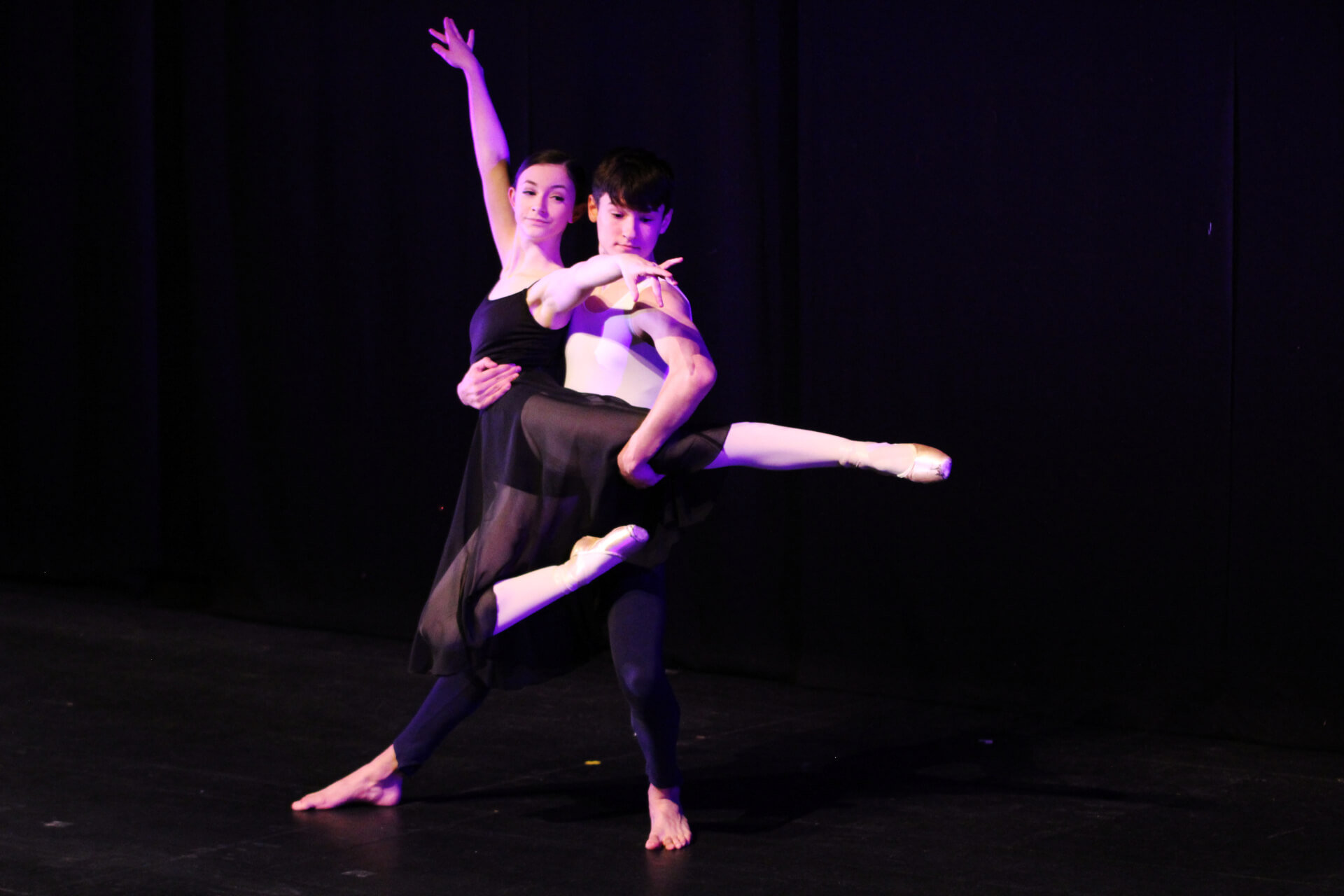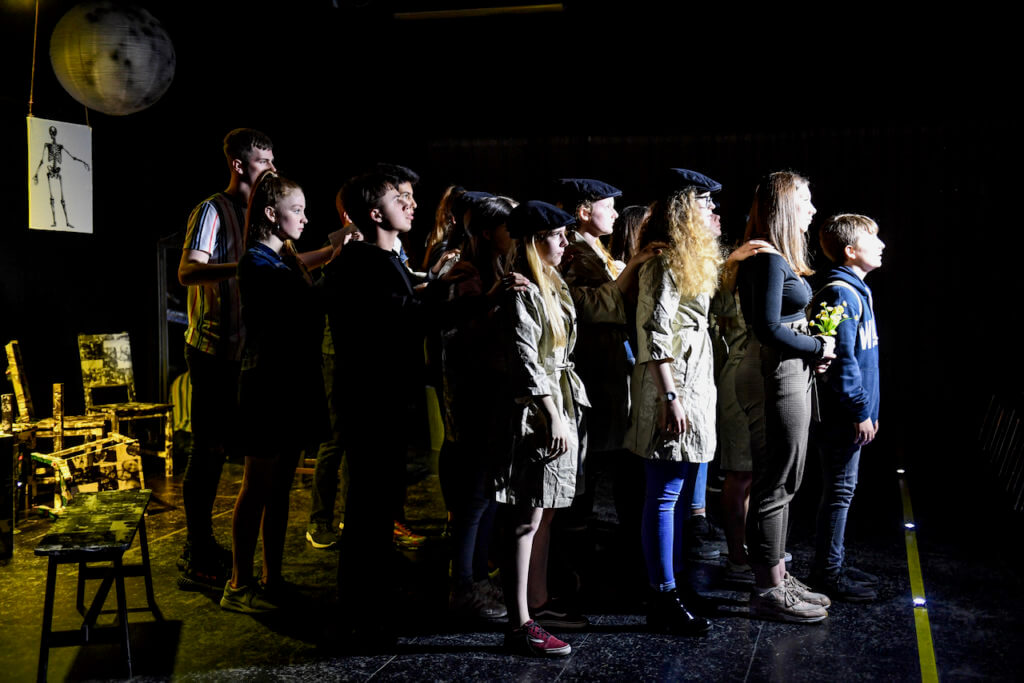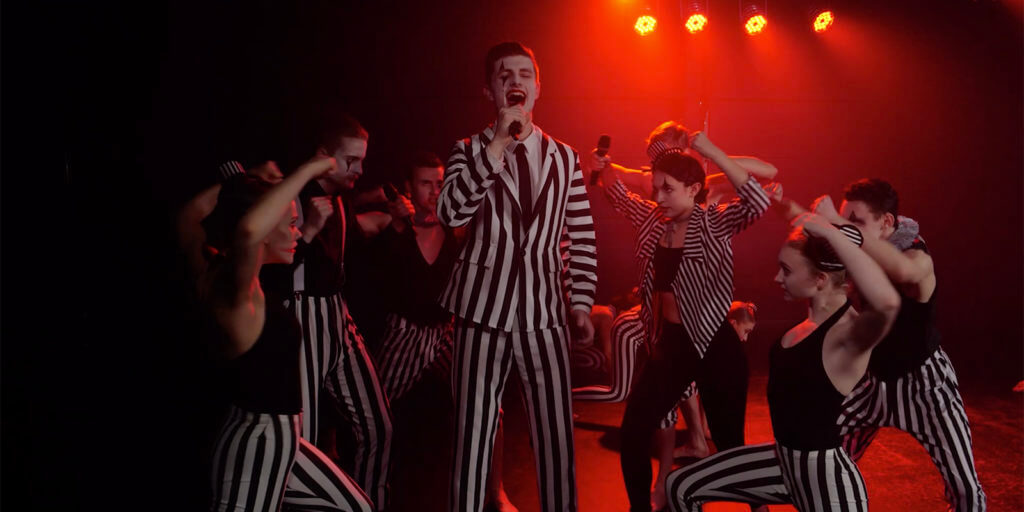Celebrating 100 Years of The Royal Academy of Dance.
The show opened in the 1920s with the students showing their progression through the different levels, from the little ones working through the grades and ultimately to advanced pointe work. The Charleston en pointe was impressive! It was wonderful to see a narrative interspersed with dancers sharing their stories and experiences. Many describing how much practice is needed and that, ultimately the goal, is to be in the frontline.
1930s Les Sylphides with the narrative of ballet and modern and how the two are inextricably linked.
It was also interesting in the video clip from Gemma Kendall talking about how vitally important ballet is for actors, how it helps you learn about your body and how to hold yourself in spaces.
I loved the 1940s, featuring the Andrew sisters with wonderful harmonies from Tia Antoine-Charles, Ella Jones-Sale and Agata Graban.
The Jubilee Wood Dancers demonstrated all levels of dance and it reminded me when I started dancing, things were a lot less inclusive! The primary school showed how dance can be part of the primary curriculum as enrichment and give children a dance experience that maybe encourage them to join a dance class.
‘At the Barre’ showed the strength and repetition required for ballet with the male dancers lifting the barre, Kory Trantum and Mason Stokes. And Lily Harvey lifting herself and being lifted by them. Demonstrating that dancers are athletes. Olivia Phillips’ rendition of ‘White Cliffs of Dover’ had me reaching for my Kleenex.
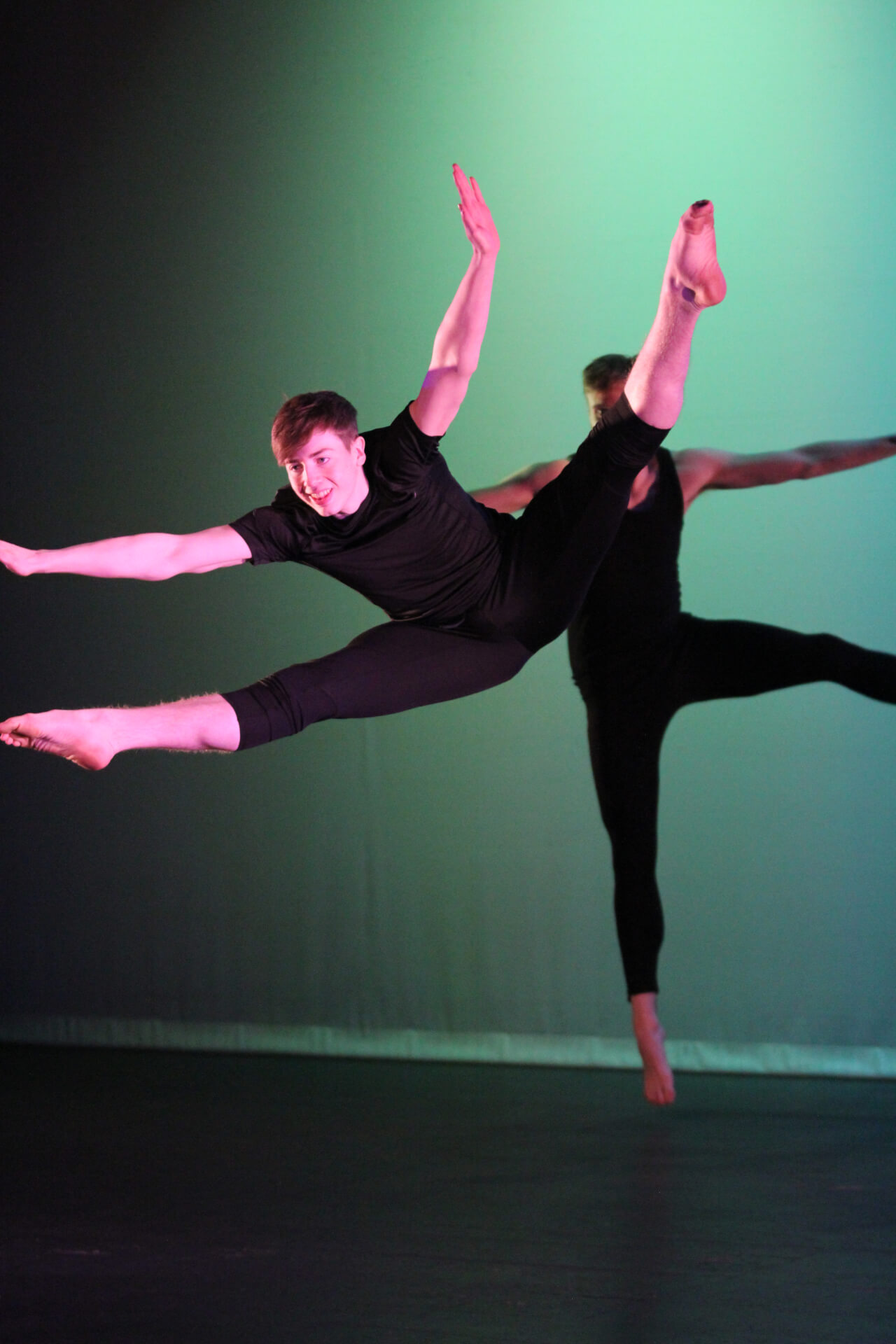
With the advent of the 1950s, came The Nutcracker, by Grade 4 ballet B, and showed the very familiar opening of the presents. This is when Sadlers Wells Ballet was invited to move into The Covent Garden Opera House, thus becoming the Royal Ballet.
The Grade 4 dance Fusion demonstrated the strength and athleticism required of the male dancers with elevation and leaps showing off like Peacocks!
After interval it was the 1960s and it really did start to feel like a show of two halves. Maisy Nixon as a jiving diva clad in scarlet, raised the temperature! She is a fabulous dancer and had great stage presence.
The 1970s arrived with a rather understated ABBA, as anyone knows trying to sing ABBA is harder than it sounds, I do feel more could have been put into some of the moves, however, ‘Superstition’ with graduates, Katie Rioch and Charlie Drakard, wearing monochrome, demonstrated some beautiful flexibility. I so enjoyed ‘At the Car Wash’ with Grade 5 ballet, performing.
And then came my favourite decade, the 1980s and was impressed with ‘Around the World’, a creative contemporary dance by air stewardesses, demonstrating that contemporary is much harder than it looks! I enjoyed this routine.
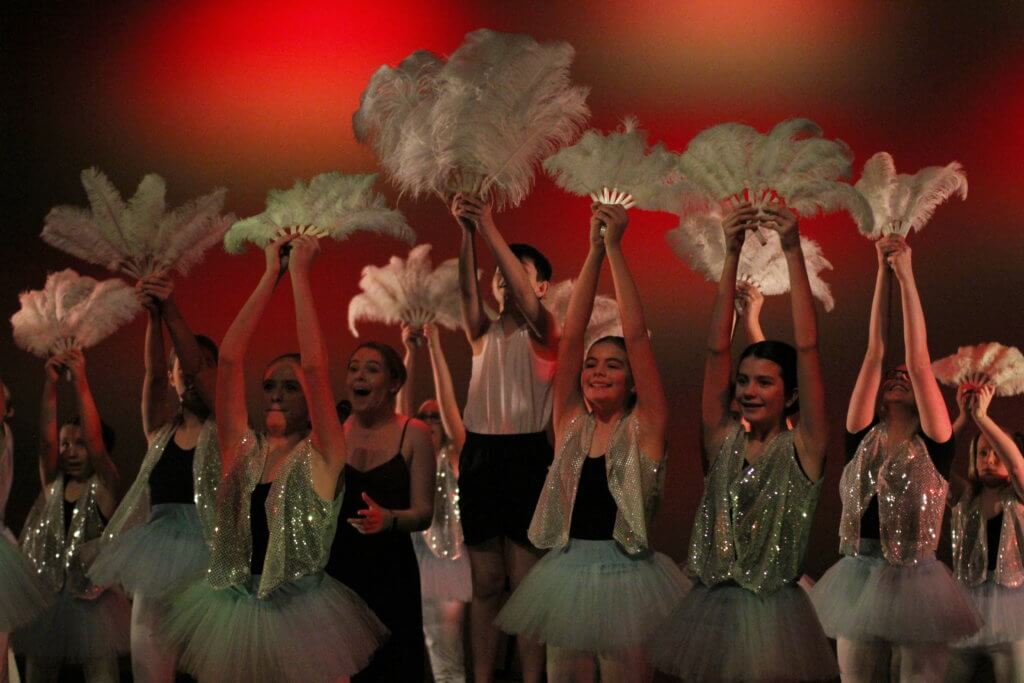
Then came the highlight of the evening for me, the 1990s, which isn’t my favourite decade, musically speaking, but the two excerpts from Billy Elliot were just amazing. Casey Smith as Billy’s dead Mother, singing ‘The Letter’ to her young son, was exceptionally emotional and her voice is utterly sublime. ‘Shine’ brilliantly sung by Scarlett Pickard beautifully demonstrated the variety that is Musical Theatre, and this is where Billy gets a chance to shine amongst a sea of girls, when dance was considered uncool for boys. Earlier we had a narrative from Charlie Haydn and Mason Stokes who said that they had felt pressure initially being boy dancers but had overcome this and absolutely love to dance.
Choreographer, Chris Bradley eloquently spoke about the influence of other choreographers such as Isadora Duncan who turned ballet on its head as she didn’t like its confines, and of course, Matthew Bourne, who, in my opinion, is one of the greatest choreographers of the 21st century. Chris spoke of Matthew’s progressive take on Swan Lake by casting an all-male troupe.
We ended with current day with an intermediate exam variation, ‘Through the Mirror’ and ‘Welcome to Wonderland’ and it’s so wonderful to see how the Arts1 dancers are progressing.
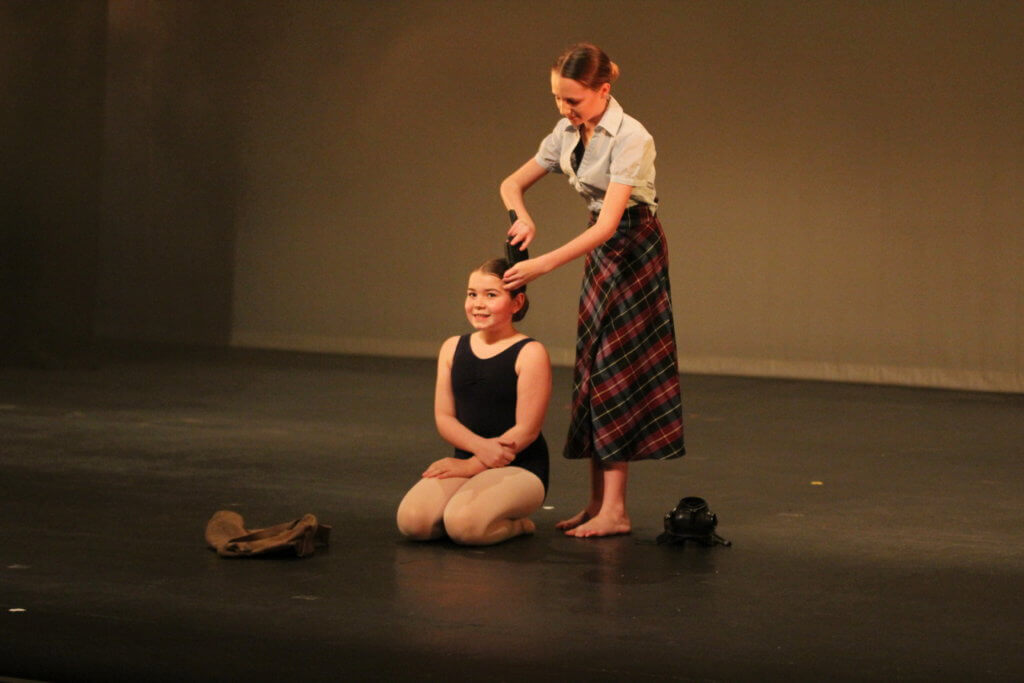
Overall it felt a bit stop/starty and could possibly have been more cohesive, with less time between dances but it was fine to have the gaps between the decades. I would liked to have seen more decade-appropriate attire, i.e. flapper dresses for the 20’s, just to add credence, as the 40’s, 70’s etc did. Unfortunately, the lighting did not always do the dancers justice and I’d like to have had their feet in the spotlight. Having said all this, is was a wonderful showcase for fledgling dancers, those who just dance for joy and those for whom, this will be a career. As always, with Arts1 productions, this was educational, professional and made with such passion. Well done to Ross Jardine Wight, Head of Pre-Vocational Training at Arts1 and his amazing team!
Nancy Stevens
Podcaster/Arts and Media Influencer and Writer
